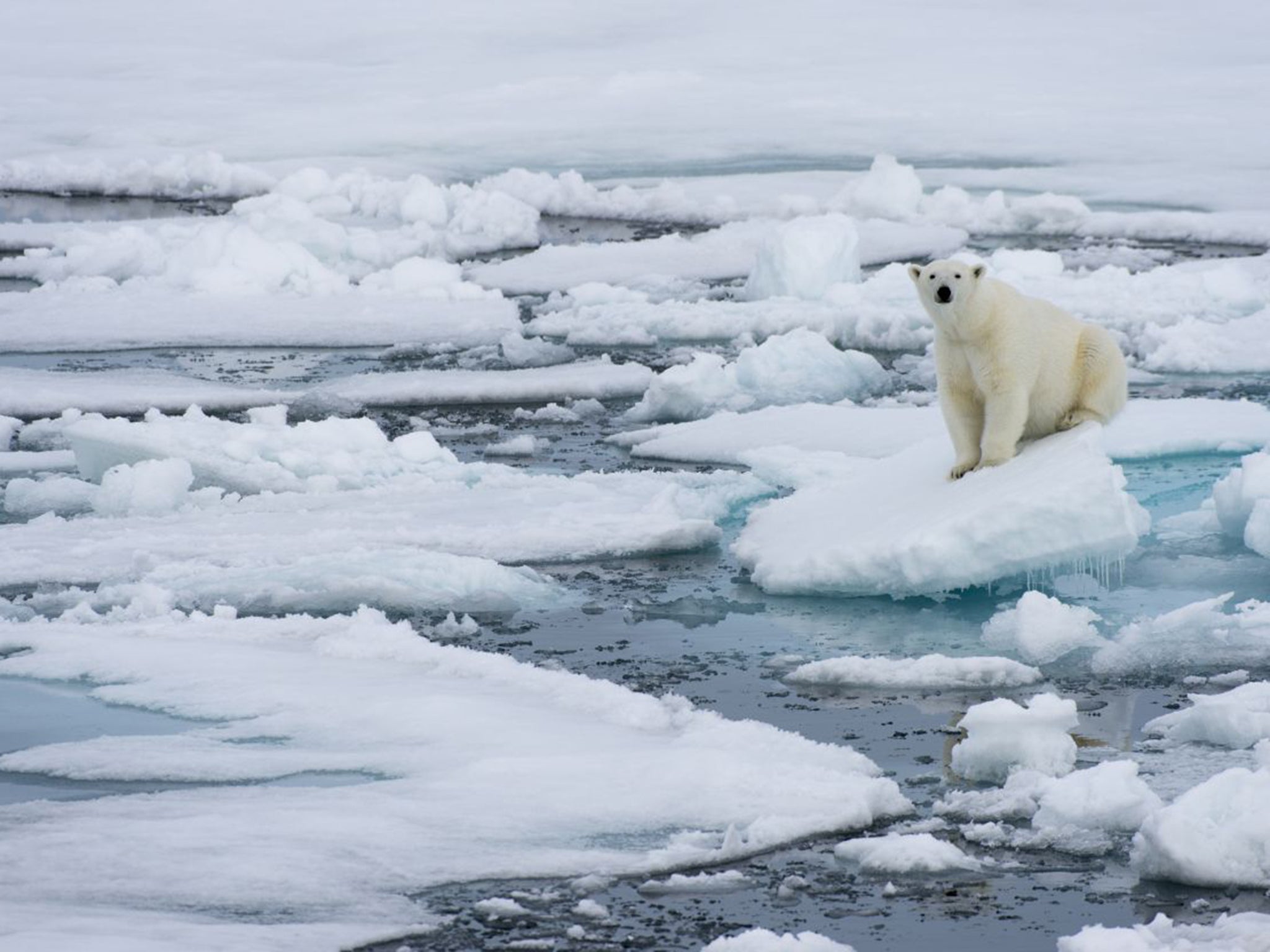Arctic warming: Why record-breaking melting is just the beginning
It has been an ‘absurdly warm’ winter in the Arctic this year, as temperatures within 200 miles of the North Pole peaked above freezing

Rapidly disappearing Arctic sea ice is about to set a new record after an “absurdly warm” winter at the top of the world. For the second year running, it will have grown to cover less of the Arctic Ocean than ever before.
The revelation comes as scientists are increasingly worried that the heating of the region could escalate out of control, as growing numbers of “feedback mechanisms” – which reinforce and accelerate the process – are being discovered.
Most attention on the melting sea ice so far has been focused on the increasingly low minimum levels it reaches each September. Its nine smallest-ever extents have all occurred in the last nine years, with the record being reached in 2012, when it covered only 3.41 million square kilometres - 44 per cent less than the average of the previous three decades, and a full 16 per cent lower than the previous record, in 2007.
But the amount by which the ice recovers each winter, peaking at the end of February and the beginning of March, though little publicised, is at least as important. Last year it reached only 14.54 million sq km on 25 February, its peak day – the lowest ever. Exactly a year later, at the end of last week, it was just 14.27 million sq km, a fall of 270,000 sq km.
Scientists at the National Snow and Ice Data Centre in Boulder, Colorado (NSIDC) – the world’s foremost authority on the issue – are not quite ready to proclaim a new record, as the ice may yet spread further over the next days. But, with another week of unseasonably warm weather forecast for the region, they privately believe it is almost certain.
January has already set a new record for the month, with ice cover averaging just 13.53 million sq km, over a million sq km below its average extent between 1981 and 2010. And Professor Julienne Stroeve of the NSIDC said last week that February would also hit a record low.
Any new ice that now forms will be very thin and will melt quickly as temperatures begin to rise in the spring. And, indeed, Arctic ice has been growing thinner even as its extent has shrunk: across the region it is now less than half as thick as it was in 1980.
This year’s record low has been driven by what NSIDC calls an “absurdly warm” winter: its director, Mark Serreze, has described it as the strangest ever observed in the region. The US government’s National Oceanic and Atmospheric Administration says the warming is “off our chart”.
In late December, temperatures within 200 miles of the North Pole actually peaked above freezing point. During January they averaged 13F above normal across the Arctic; even the coldest reading, recorded in Svalbard, north of the Arctic Circle, was warmer than the average highest temperature in previous years.
Fairbanks, Alaska, received less snowfall in the whole of December and January than fell on New York in just a single hour last month. Anchorage’s famous 50 km cross-country ski race was forced to transfer on to a 4km loop of artificial snow. And the Barents and Kara seas north of Norway and Russia have remained almost ice-free all winter.
The warmth has partly been driven by natural factors – a strong el Niño in the Pacific and, much more importantly, a shift in the Arctic oscillation weather pattern, which weakened the atmospheric barrier between polar and milder latitudes.
But scientists are in no doubt that global warming is the fundamental factor, and that similar conditions will reoccur. Such ice as there is in the Barents and Kara seas, for example, is starting to form two months later than in the past, and scientists say that this year’s freak temperatures near the North Pole will not be unique.
Last year was the warmest ever recorded worldwide, by a large margin, and some scientists believe that this one will exceed it.
The melting itself causes greater warming, because it replaces a white surface, which reflects heat back into the atmosphere, with dark water, which absorbs it. By one calculation this effect has added a further 25 per cent of warming since 1979 to what has been caused by carbon dioxide emissions.
Two new studies published last week by the Woods Hole Research Center in Massachusetts, reported new evidence of such self-reinforcing “feedback mechanisms”.
They showed that, as the region’s permafrost thaws, rapid changes in the functioning of microbes in the soil increase emissions of carbon dioxide and methane, an even more potent warming gas. Partly as a result, the tundra – which contains twice as much carbon as the atmosphere – has turned from being a system that absorbs greenhouse gases, to one that emits them, accelerating climate change even further.
Join our commenting forum
Join thought-provoking conversations, follow other Independent readers and see their replies
Comments
Bookmark popover
Removed from bookmarks